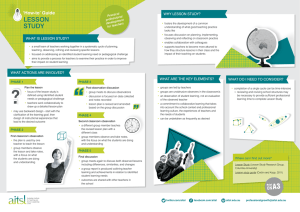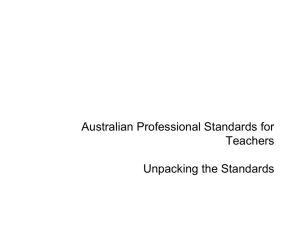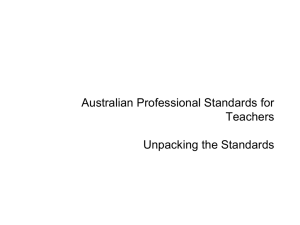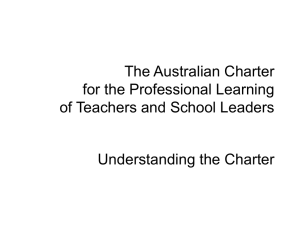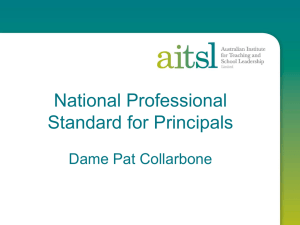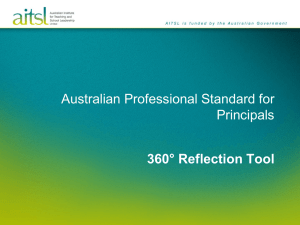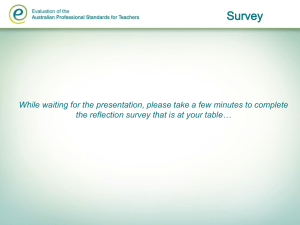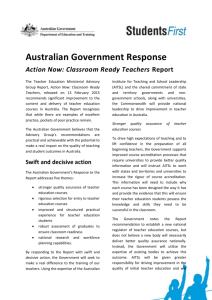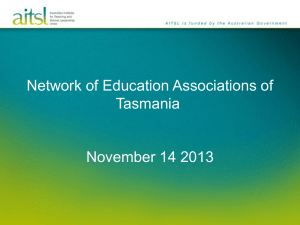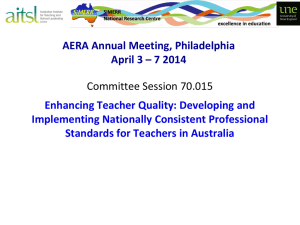Australian Teacher Performance and Development Framework
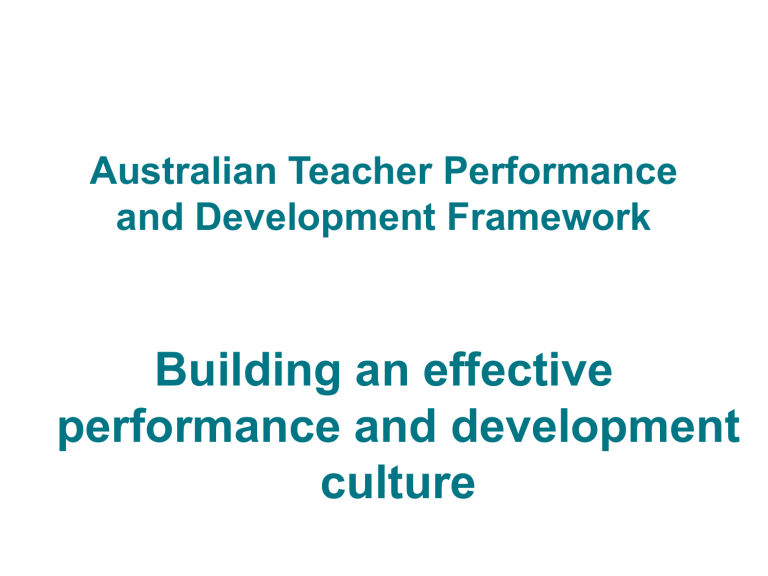
Australian Teacher Performance and Development Framework
Building an effective performance and development culture
Click image to play
A successful approach to teacher performance and development relies on a strong and supportive culture in a school.
> Reflection and goal setting
> Professional practice and learning
> Feedback and review
Teacher performance improves when these opportunities are available:
> self-reflection and goal setting
> regular classroom observation
> provision of constructive feedback from school leaders and peers
> frequent feedback on classroom performance
> shadowing and coaching from peers and leaders
> opportunities to engage in teamwork, collaboration and action learning
Hay Group 2012, Growing our potential
Everything that teachers do and that is done to support them is linked to increasing the positive impact of teaching on students.
How do you define and measure student outcomes in your school?
To focus on improving teaching, it is necessary to have a clear vision of what effective teaching looks like. The
Standards provide the basis and a common language for coming to a shared understanding of what effective teaching looks like in the context of a particular school at a particular time.
Dual purpose:
– Improvement
– Career progression
Click image to play
> Based on the Standards, what are the priorities and fundamental components for effective teaching in your school’s unique context?
> How do you share your understanding of effective teaching?
> As a teacher, how do you know if your teaching is effective?
Leadership must come from all levels, from those with and without formal leadership positions.
Enacting change is a shared commitment.
The Standard takes into account the crucial contribution made by principals. The role of the leader is critical in creating a culture of performance and development. However, leadership is required from all levels and is a shared commitment.
“School leadership supports performance and development within the school. But I see a performance and development culture in the school really supporting teachers to become leaders …”
Kathryn Hudson, Principal
St Peter’s Catholic Parish Primary School, VIC
> What is the responsibility of school leaders in developing a performance and development culture?
> What is the responsibility of teachers in developing a performance and development culture?
> What does it look like when school leaders and teachers collaborate around leadership of cultural change?
All schools are different, and need to respond to their unique contexts and histories.
> History
> Context
> Current and past initiatives
Identify your starting point or next steps in improving effective performance and development practices in your school.
Click image to play
Lakemba Public School, NSW
> Work in groups
> Each person in turn is to place the ten cards in their chosen square for their school at this time . Take time to explain the reason/s for your choice
> Together reflect on what you have learnt about your school’s/organisation’s current structures recording any insights
High
2 1
Impact
Low
Low
3 4
Achievability High
Performance and development processes should align with school, system and national current plans, processes and initiatives.
How do you intend to tackle the challenge of aligning the practices outlined in the performance and development Framework to your existing school arrangements?
“Everything we do here is based on improving our performance, both of the students and the staff and myself too. So everything is about performance and development the whole way through.”
Kevin Mackay, Principal
Dandenong North Primary School, VIC
Click image to play
aitsl.edu.au
newsroom.aitsl.edu.au
@ performance@aitsl.edu.au
@aitsl youtube.com/aitsleduau iTunes U > Australian
Institute for Teaching and
School Leadership www.facebook.com/aitsl
